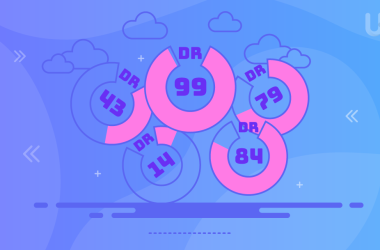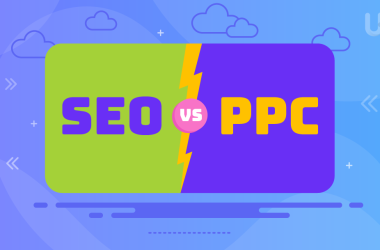Google, through numerous algorithm updates, demonstrates how crucial are user needs. Google conveys that SEO and UX processes should complement each other, enabling you to achieve better results in search engine optimization.
So, as you can see, it’s not enough to focus on keywords, backlinking, or hosting your site on SEO-Friendly VPS Hosting. To achieve success, you need to both acquire users (SEO) and retain them, leading to conversions (UX).
Page Experience and Core Web Vitals
The introduction of additional Page Experience elements, known as Core Web Vitals, illustrates how UX integrates with the realm of SEO. Google defines Core Web Vitals as a set of essential real-time usability indicators. Their purpose is to influence the user’s comfort while using a website and enhance the quality of user experience.
Core Web Vitals encompass page loading, interactivity, and visual stability. Google has systematically expanded Core Web Vitals with new factors for several years. The goal is to create user-focused website functionalities and ensure smooth and satisfactory user interactions with the site.
The Core Web Vitals include:
- Largest Contentful Paint (LCP) – page loading; this indicator measures the loading performance of a page and should be less than 2.5 seconds.
- First Input Delay (FID) – interactivity; it measures the page’s response time to user actions, and this factor should not exceed 100 milliseconds.
- Cumulative Layout Shift (CLS) – visual stability; this metric measures the time from page loading to the final placement of elements and should be less than 0.1. Its purpose is to prevent the user from accidentally clicking on an ad or another link selected due to changes in the page layout.
SEO and UX share many common principles that positively influence each other. Well-executed actions in the realms of UX and SEO bring you closer to a common goal, which is conversion.
Search Results

UX actions concern the website, while an SEO specialist can initiate their efforts much earlier. Creating specific emotions can start before the user even arrives at your site. The point of contact is the search results. So, how do you make a good first impression?
Several essential aspects contribute to generating interest in search results:
- Targeting Keywords – In recent years, there has been a trend where Google aims to ensure that users receive the best possible answer to their query, promoting pages that most accurately respond to the user’s question. It’s worth verifying search results because it may turn out that phrases you consider synonymous yield different search results.
- URL Structure – UX and SEO align on this topic. Short and clear URLs are much more memorable to users and instill greater trust.
- Title – Properly optimizing the page title and including relevant keywords can influence the user’s decision in your favor. Thanks to the title tag, the user immediately sees what to expect from your website.
- Meta description – Well-optimized and engagingly written meta descriptions with a call to action can also entice users to visit your site.
Mobile Responsiveness
Over half of website visits come from mobile devices. For this reason, Google has implemented a mobile-first index. As the name suggests, the mobile version of a website becomes Google’s starting point for evaluating search engine rankings.
Page Speed
Contemporary internet users aren’t patient. If a website takes too long to load, you may suffer the consequences of users abandoning your site and turning to a competitor’s offer. To speed up a website, it’s important to ensure its optimization, fast VPS hosting, caching, and avoiding heavy multimedia content and an excess of plugins.
To check a site’s speed, you can use tools like Page Speed Insights, Pingdom Tools, or GT Metrix. By following their suggestions, you can improve page speed metrics.
From a UX perspective, clear and user-friendly navigation is crucial for how a site is perceived. Users must be able to find the information they need and determine their current location on the site without problems.
The on-site search function, which is also of utmost importance, doesn’t always fulfill its purpose and doesn’t guarantee that the user will quickly find what they are looking for. Users often resort to the search bar only when the main internal linking structure disappoints them.
A well-designed menu combines both UX and SEO. Appropriate category names and anchor texts affect the SEO process.
Internal Links
In addition to providing suitable descriptions for internal links for SEO purposes, links serve other roles connected to UX. When you add links to related posts or products within the content, you increase the user’s time spent on the site and, at the same time, provide accessible access to content that may be of interest to them.
Links in modules featuring similar or complementary products can also contribute to revenue growth by increasing the value of the shopping cart.
A Call To Action is an invitation to take action. It’s typically an interactive element (a graphic or text link) aiming to lead the user to a specific action.
From an SEO standpoint, it’s critical how the anchor text of a particular link is described. For UX, more significant is whether the user responds correctly to the element and takes a specific action that translates into a conversion. Microcopy often plays a crucial role – when used correctly, it can yield tangible results.
Take care of your website’s UX
Users from different parts of the world access your website, but your server must be located in a specific place. How can you ensure that your website loads equally fast regardless of the location? UltaHost has a solution for you:
Content
Content written for SEO isn’t always of high quality. Often, it also fails to meet user expectations. It’s important to remember that its role should not be limited to including the right amount of keywords. Texts should also engage the user and encourage them to stay on the page longer.
Modern users tend to scan text rather than read it thoroughly, so it’s essential to use visually enriching elements. These include:
- headings (containing keywords and organizing content),
- lists and bullet points,
- text bolding.
Testing
Testing new solutions is a fundamental UX principle, and it’s worth applying it to SEO as well. Nowadays, you optimize websites not only for search engine robots and algorithms but primarily for users – ordinary people. If you invest in modern VPS hosting with SSD NVMe but forget about SEO or UX, you won’t succeed.
Relying solely on your own experiences can be erroneous and sometimes harmful. It’s valuable to test various solutions and use A/B testing to gain a broader perspective.
The close collaboration between UX and SEO is not just the future; it’s the current reality. Effective SEO cannot exist without properly implemented User Experience elements. By combining these two fields, you can achieve increased conversions and create a website that aligns with new norms and user expectations.
This ideal combination is evident in the growing field of internet marketing referred to as SXO. Given Google’s focus on user emotions and behaviors, this partnership has a promising future.
Conclusion
SEO and UX are undeniably a perfect match in today’s digital landscape. Google’s emphasis on user experience, as demonstrated through algorithm updates and the introduction of Core Web Vitals, reinforces the idea that SEO and UX should work in harmony to achieve superior search engine rankings.
Both disciplines share common principles and objectives. Whether it’s optimizing content, enhancing mobile responsiveness, improving page speed, or refining navigation, SEO and UX complement each other to provide a holistic and user-centric web experience.
Moreover, the integration of SEO and UX doesn’t represent a distant future but is the current reality. The effective implementation of User Experience elements is essential for successful SEO and, by extension, increased conversions and user satisfaction.
This collaboration is exemplified in the emerging field of internet marketing known as SXO, which holds the promise of a bright future, aligning with Google’s user-centric approach to online interactions and behavior.
The last aspect that connects SEO and UX is the need to adapt your server to your requirements. If you try to cut costs by purchasing a server that can’t handle your website and the traffic it generates, your search engine rankings will drop, and at the same time, the bounce rate will increase. To avoid this, invest in an affordable dedicated server. You won’t break the company’s budget, and you’ll maintain high levels of SEO and UX. Check out our plans!
Internal links play a dual role in improving UX and SEO. They guide users to related content, increasing their time spent on the site and providing easy access to relevant information, thus enhancing UX. Additionally, well-described internal links contribute to SEO by improving the site’s structure and aiding in content discovery. Call-to-action buttons, on the other hand, encourage specific user actions that can lead to conversions, making them valuable for both UX and SEO.
Core Web Vitals are a set of real-time usability indicators defined by Google. They include metrics such as Largest Contentful Paint (LCP), First Input Delay (FID), and Cumulative Layout Shift (CLS). These indicators directly impact the user’s experience while interacting with a website, making them crucial for UX. However, Google also considers these metrics when ranking websites, highlighting their significance for SEO. Optimizing for Core Web Vitals enhances both UX and SEO.
Content quality is crucial for both SEO and UX. Engaging, informative, and well-structured content keeps users on your site longer, reducing bounce rates and improving UX. Moreover, high-quality content with relevant keywords contributes to SEO by increasing organic search visibility. To enhance content quality, consider using visually enriching elements like headings, lists, bullet points, and text bolding to make the content more appealing to modern users who tend to scan rather than read thoroughly.
Mobile responsiveness is essential because over half of website visits come from mobile devices. Google has implemented a mobile-first index, meaning it prioritizes the mobile version of a website when evaluating search engine rankings. Ensuring that your website is mobile-friendly not only improves its SEO but also enhances the user experience for mobile users, reducing bounce rates and increasing engagement.












